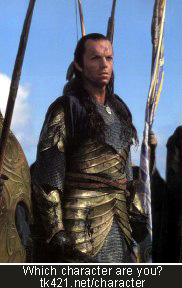The Hurva Synagogue is Rebuilt and Rededicated, and the Palestinians Riot in Protest

The Los Angeles Times would have you believe that the Arab riots this week in Jerusalem were incited by the announcement of new apartment construction in the Jerusalem neighborhood of Ramat Eshkol. Don't believe it. That announcement primarily outraged and angered Joe Biden and Hillary Clinton.
The real affront that occurred this week, from the Palestinian perspective, was the rededication of the Hurva Synagogue. That sparked the riots. In Damascus, Khaled Meshal, the exiled leader of the Islamic militant group Hamas, said the synagogue’s dedication signified “the destruction of the Al Aksa Mosque and the building of the temple,” according to Agence France-Presse. Calls by Palestinian Arab leaders for "days of rage" were answered with riots by Arab mobs.
What is the Hurva? Why does its reconstruction cause Arabs to rage?
In the early 1700s, the followers of Rabbi Yehuda HaChasid (Rabbi Judah the Pious) founded a syngogue in the the walled city of Jerusalem, in what is now called the Old City, but at the time was the entire city. Only a few years after its initial construction, it was destroyed by a fire, and lay in ruins for the next 140 years. It was called ha-Hurva, literally, "the ruin." Then, in 1860, the Perushim, descendents of followers of the Vilna Gaon, Rabbi Eliyahu ben Shlomo Zalman (1720-1797), who had immigrated from Lithuania to the land of Israel in the early 19th century, rebuilt the synagogue on its original site. Although its official name was Beis Yaakov (House of Jacob) Synagogue, everyone called it Beit Knesset ha-Hurva (the Ruin Synagogue), or simpy, the Hurva. The Hurva, shown below in a 1920 photograph, quickly became Jerusalem's main Ashkenazi (Eastern European) synagogue.

Then came Israel's War of Independence. On May 27, 1948, the Jordanian Arab Legion captured and destroyed the synagogue, reducing it to rubble. One day later, the Jewish defense forces in the Jewish Quarter of Jerusalem surrendered to the Arab Legion. The Arabs expelled all of the Jewish residents of the Jewish Quarter, and pillaged and looted the area.
Despite constant charges against Israel of ethnic cleansing, the only incidents of ethnic cleansing in the modern history of Jerusalem were the anti-Jewish riots of the 1920's and 1930's, which forced Jews out of their homes and businesses in the so-called Christian and Moslem Quarters of the Old City into the Jewish Quarter, and the climactic destruction of the Jewish Quarter in 1948.
In 1967, when Israel recaptured the Old City of Jerusalem from Jordan (not Palestine--there never has been a national entity called Palestine), the Jewish Quarter was rebuilt and reinhabited by Jews for the first time in 19 years. Until recently, visitors to the Jewish Quarter saw only a memorial arch marking the site of the Hurva.

Now the Hurva has finally been rebuilt. A photo of the beautifully restored synagogue appears at the top of this post. It is not on the Temple Mount. It does not threaten the Al Aksa Mosque. The Jewish people have merely restored a place of Jewish worship that the Arabs had destroyed. And that is what incites the Arabs to riotous anger.





0 Comments:
Post a Comment
<< Home